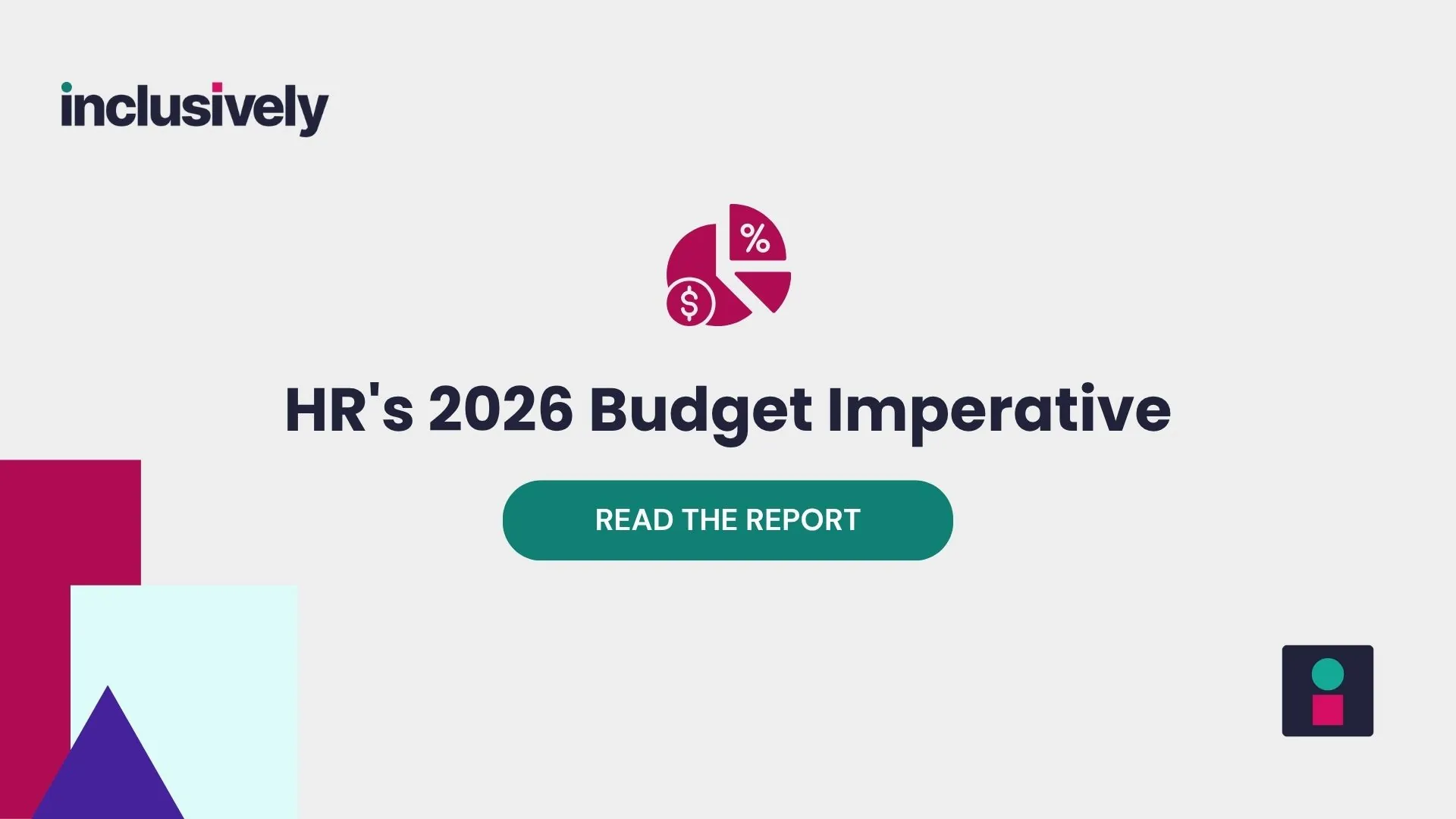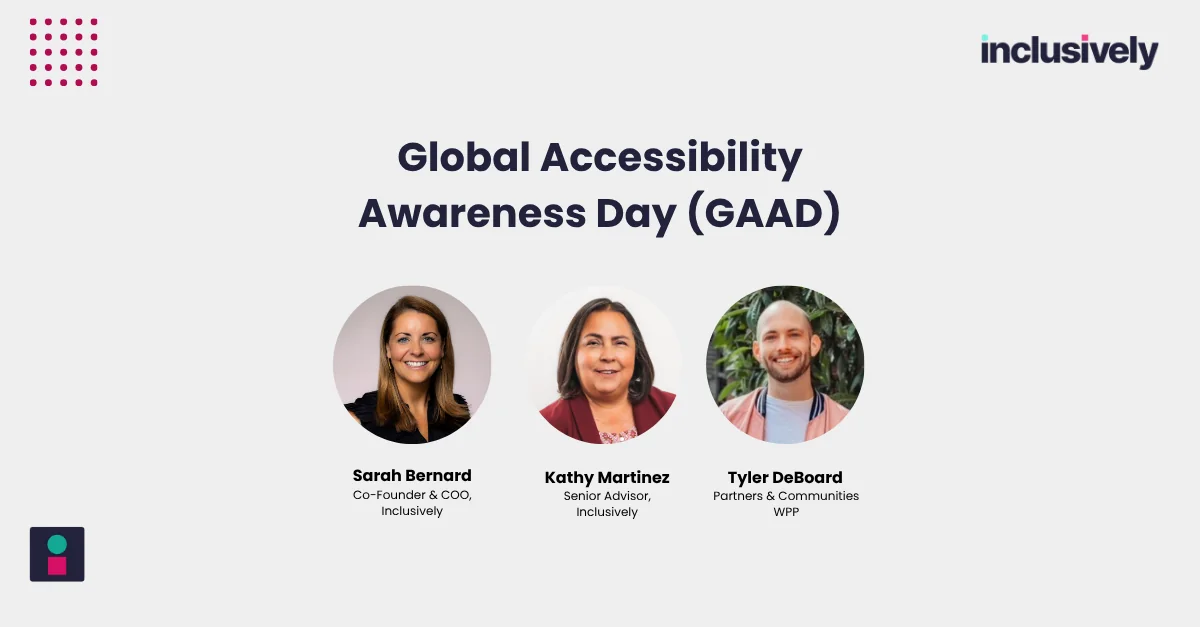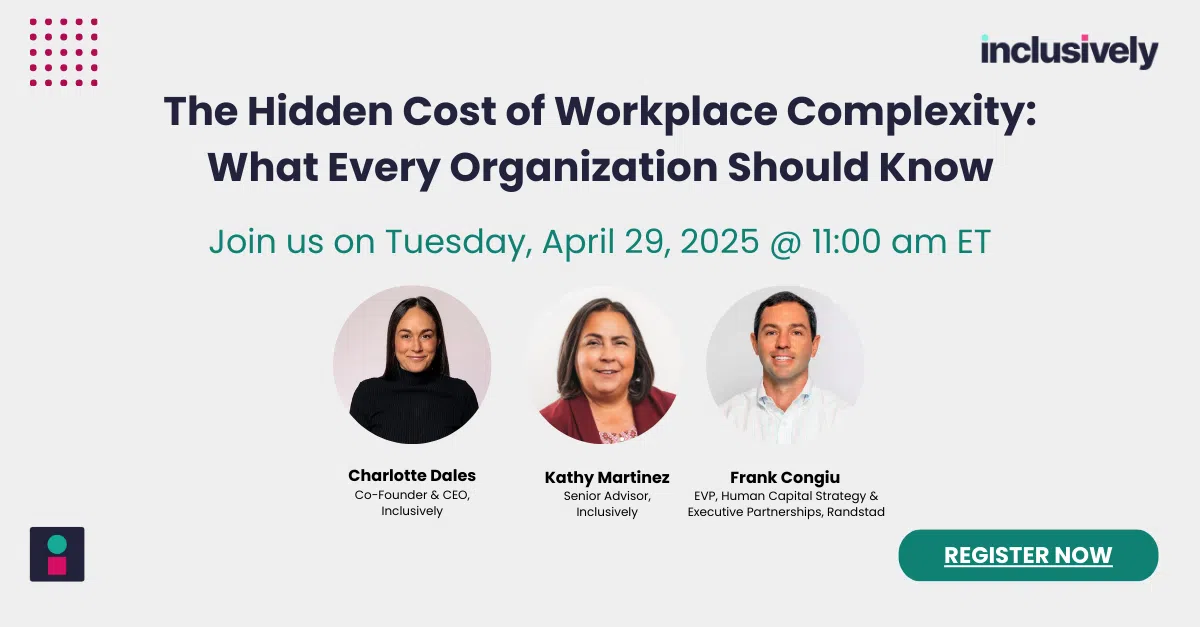Gone are the days when diversity was merely a checkbox in corporate policies. Today, it embodies a dynamic, essential strategy that shapes the core of organizational culture and operations. This evolution reflects a more profound understanding that diversity is not just about bringing different faces to the table; it’s about valuing and integrating diverse perspectives, experiences, and abilities into the fabric of corporate life.
At the forefront of this evolution is the focus on disability inclusion. Far from being an afterthought, it’s now recognized as a critical driver of business performance. Companies increasingly acknowledge that including people with disabilities is not just a moral imperative but a strategic advantage. It brings forth a wealth of untapped potential, driving innovation, enhancing creativity, and fostering a more robust and empathetic work environment.
We encourage you to explore Inclusively’s innovative solutions, designed to integrate inclusivity into your business model seamlessly.
In this article, we’ll delve into how disability inclusion positively impacts business, debunk common misconceptions, and explore how platforms like Inclusively are pivotal in turning inclusive theories into successful practices.
Positive Business Impacts of Disability Inclusion
Inclusion of persons with disabilities in the workforce isn’t just a commendable approach; it’s a strategic advantage for businesses. Several case studies illustrate how incorporating disability inclusion has led to significant improvements across various aspects of business performance.
Enhanced Creativity and Innovation: Businesses have reported a surge in creativity and innovation after accommodating employees with disabilities. These individuals often bring unique perspectives and problem-solving skills from navigating an inaccessibly designed world. For instance, an employee with a physical disability, such as limited mobility, might devise unique methods to perform tasks more efficiently within their physical capabilities. These methods could then be adopted company-wide, leading to improved workflows or ergonomically designed workstations that benefit all employees.
Boosted Productivity: Inclusion can lead to a more motivated workforce. A study by Accenture revealed companies that actively embrace disability inclusion perform better financially, witnessing a 28% higher revenue and double the net income compared to their peers who don’t.
Improved Team Dynamics and Collaboration: Teams that include members with disabilities often experience enhanced collaboration. Their presence can foster a more empathetic and patient work environment, which is conducive to effective teamwork. For example, a marketing agency reported a more cohesive team dynamic after implementing inclusive hiring practices.
Increased Retention Rates: Companies with inclusive cultures tend to have higher employee retention rates. Employees who feel valued and supported are less likely to seek employment elsewhere. For instance, a retail chain experienced a drop in employee turnover by 30% after enhancing its disability inclusion strategies.
Access to Tax Benefits: In many states, businesses receive tax incentives for hiring disabled individuals and for making their workplaces accessible. This financial benefit can offset the costs of accommodations and training.
Elevated Employee Morale: Inclusivity leads to a more positive workplace atmosphere. Employees in inclusive environments generally report higher job satisfaction and morale. A financial services company noted a significant increase in employee satisfaction scores after introducing more inclusive policies and practices.
These examples underscore that disability inclusion is not just a feel-good initiative but a solid business strategy with measurable outcomes. It’s about recognizing the untapped potential within diversity and harnessing it for the betterment of the company and its people.
Common Employer Misconceptions
Regarding disability inclusion in the workplace, misconceptions and barriers often hinder progress. Let’s clarify these misconceptions to create an environment where knowledge, empathy, and effective solutions are more prominent. The following are some common misconceptions about disability inclusion in the workplace:
Cost and Complexity: The assumption that ADA accommodations are costly and complicated is a significant barrier. In reality, most accommodations are neither expensive nor complex. According to the Job Accommodation Network (JAN), 56% of accommodations cost absolutely nothing, while the rest typically require a one-time expense that’s quite minimal compared to the value added by the employee.
Underestimating Potential: Another common misconception is underestimating the potential contributions of employees with disabilities. Many businesses fail to recognize the unique perspectives and skills that these individuals can bring to their teams, such as problem-solving abilities honed through navigating daily life.
Simplifying Inclusion with Inclusively: Inclusively’s platform is designed to dismantle these myths by offering real-time personalization and easy-to-implement solutions. Their technology facilitates open conversations about individual needs, making the inclusion process seamless for both employers and employees. This approach demonstrates that accommodating employees with disabilities can be a straightforward, beneficial practice for businesses.
Inclusively’s platform helps businesses reframe their understanding of disability inclusion. By providing practical tools and clear guidance, it shows that incorporating employees with disabilities into the workforce can be a simple, enriching, and mutually beneficial process. This paves the way for a more diverse, inclusive, and productive workplace, challenging and changing the misconceptions around disability inclusion.
Inclusively’s Role in Enhancing Workplace Inclusion
Inclusively has emerged as a transformative force in redefining workplace inclusion, particularly for individuals with disabilities. Its platform and approach mark a significant shift in how businesses accommodate diverse needs, leading to a more inclusive and productive workforce.
Real-Time Personalization
At the heart of Inclusively’s platform is its real-time personalization feature. This innovative approach lets employees specify their unique needs, accommodations, and preferences directly on the platform. Whether it’s adjusting work schedules, modifying physical workspaces, or providing specific tools and technologies, Inclusively’s platform ensures that these personalization requests are communicated efficiently and effectively to employers. This level of customization is pivotal in creating a workspace where employees with and without disabilities can perform at their best.
Seamless Inclusion Environment
Beyond individual accommodations, Inclusively is crucial in fostering an inclusive environment. Its services extend to guiding employers in creating job listings that are inclusive and clearly state the accommodations they are willing to provide. This proactive transparency fosters a culture of openness and understanding from the outset of the employment relationship.
Measurable Outcomes and KPIs
Companies using Inclusively’s platform have reported measurable improvements in key performance indicators. Enhanced Employee Experience (EX), reduced turnover rates, and improved team dynamics are just a few of the tangible benefits observed. These outcomes underscore the business case for inclusive practices and highlight the positive impact of a workplace where everyone’s needs are acknowledged and met.
Inclusively’s platform is more than just a tool for accommodating employees with disabilities; it is a catalyst for cultural change. By simplifying the inclusion process and demonstrating its tangible benefits, Inclusively is leading the way in creating work environments where diversity is accommodated and celebrated. Several positive outcomes have been achieved as a result:
Enhanced Employee Experience (EX): Businesses that have integrated Inclusively’s platform into their operations have reported a notable improvement in Employee Experience (EX). This enhancement stems from the platform’s ability to cater to individual needs, making employees feel valued and understood. A supportive environment boosts morale and increases the employees’ sense of belonging and commitment to their work.
Reduced Turnover Rates: One of the most tangible outcomes for businesses using Inclusively has been the reduction in turnover rates. When employees with disabilities feel accommodated and appreciated, their loyalty to the company increases. This retention is not only beneficial in terms of reducing recruitment and training costs but also in maintaining a stable and experienced workforce.
Improved Team Dynamics: Inclusively’s emphasis on open communication and accommodation transparency has fostered more cohesive and empathetic team dynamics. Teams that embrace diversity and inclusion tend to be more collaborative and innovative, leading to better problem-solving and higher overall productivity.
The Power of Personalized Pathways
Inclusively’s unique approach to creating personalized pathways profoundly impacts employee engagement and productivity by:
Boosting Engagement: The ability of Inclusively’s platform to provide personalized accommodation pathways directly correlates with increased employee engagement. When individuals feel their needs are being considered and met, they are more motivated and engaged in their work. This heightened engagement not only improves individual performance but also contributes to the team’s overall success.
Enhancing Productivity Through Tailored Strategies: Numerous businesses have experienced the benefits of implementing Inclusively’s tailored inclusion strategies. These strategies ensure that employees with disabilities can work in an environment best suited to their needs, thereby maximizing their productivity. By facilitating an inclusive work culture, companies can tap into the full potential of their diverse workforce.
Inclusively’s platform is not just about compliance with inclusivity norms; it’s about reshaping the work culture to be more accommodating, empathetic, and productive. The platform’s ability to provide personalized accommodation pathways has proven to be a game-changer for businesses looking to enhance their workplace inclusivity and harness the potential of a diverse workforce.
Strategies for Implementing Inclusive Practices
Creating a friendly and supportive environment for employees with disabilities is not just about doing the right thing; it’s also great for your business. Here are easy-to-follow steps to make your workplace better for everyone:
- Leadership Involvement:
Bosses and managers need to take the lead in being inclusive. They should show everyone that supporting employees with disabilities is a priority and ensure these efforts are taken seriously. - Clear Inclusion Policies:
Write down your rules about supporting disabled employees. These rules should explain how your company supports them, what you expect from all employees, and the consequences of not following them. Make sure these policies are a part of every aspect of your business, like hiring, training, and promotions. - Hiring Diverse Employees:
Try to find job candidates with disabilities and make sure your hiring process is fair for everyone. You can do this by working with organizations that support disabled individuals and making sure your interview process doesn’t favor one type of person over another. - Educate Your Team:
Regular training is key. Teach your employees about the challenges faced by their disabled colleagues and how they can be more inclusive. These training sessions should be interactive, allowing everyone to participate and learn from each other. - An Inclusive Work Environment:
Create a work atmosphere where disabled employees feel valued and respected. Have team activities and meetings where everyone can contribute, and provide ways for them to share their thoughts and ideas. Encourage support groups or networks for disabled employees to discuss their experiences and provide feedback. - Celebrate Diversity:
Show respect for the unique experiences and backgrounds of your disabled employees. Recognize and celebrate their achievements and contributions. Reward employees who are great at including everyone and those who contribute to making your workplace more inclusive.
Conclusion
The journey towards an inclusive workplace is a moral imperative and a strategic business decision. Disability inclusion, as we’ve seen, goes beyond social responsibility — it directly enhances business performance. Companies embracing this approach witness a surge in creativity, productivity, and collaboration, leading to a healthier bottom line and a more vibrant workplace culture.
Now is the time for businesses to make change and reassess their approach to disability inclusion. It’s an invitation to break free from traditional norms and explore the vast potential that lies in a diverse workforce.
Discover how you can foster an environment where every employee can thrive and contribute to your company’s success. Join us in shaping a future where inclusivity is the norm, not the exception. Explore Inclusively today and start building a more inclusive, productive, and successful tomorrow.


